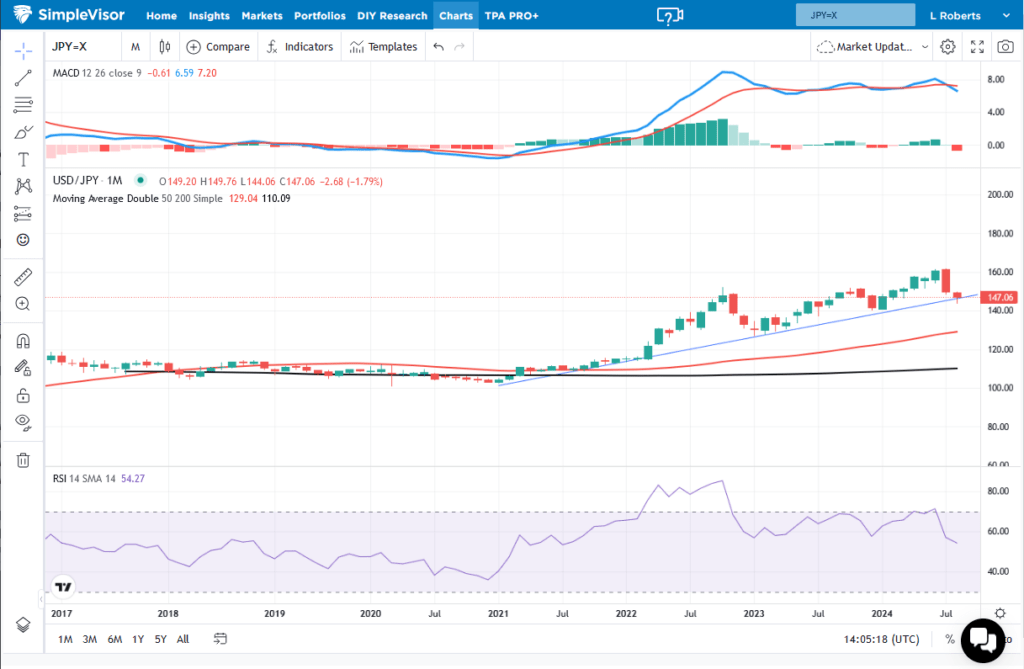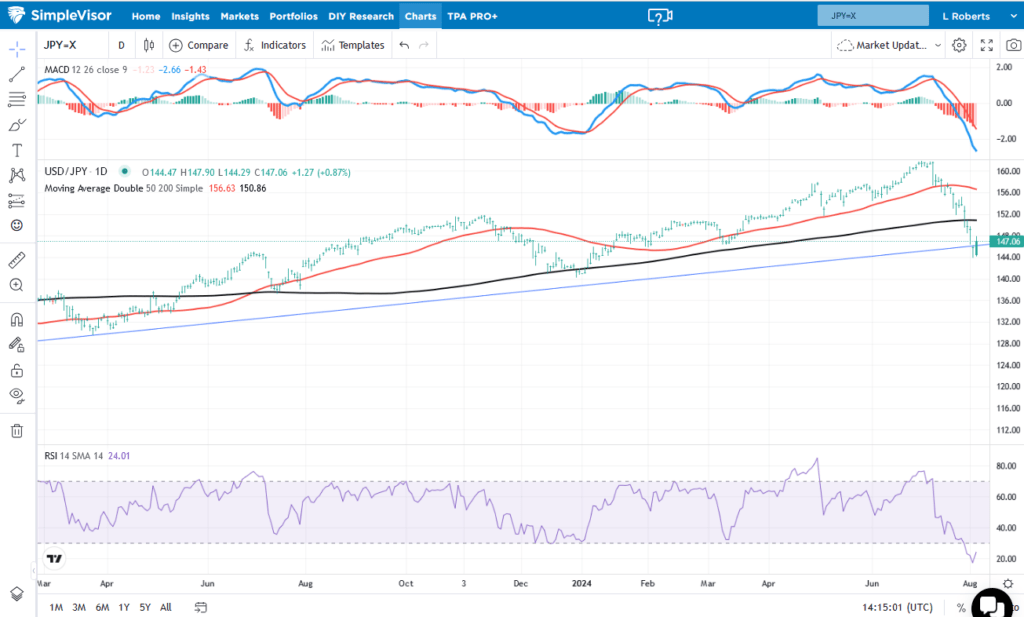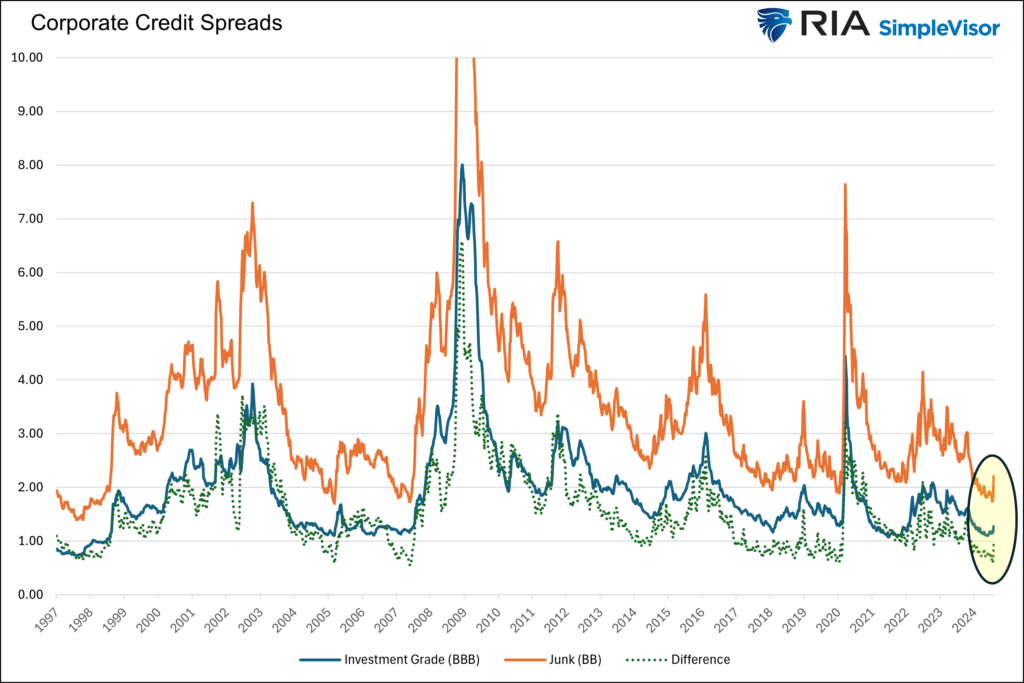The Bank Of Japan Calms Markets
If you want more evidence that the recent spate of intense volatility was related to the yen carry trade, look no further than last night’s market-calming comments from Bank of Japan Deputy Governor Uchida Shinichi.
In fact, in contrast to the process of policy interest rate hikes in Europe and the United States, Japan’s economy is not in a situation where the Bank may fall behind the curve if it does not raise the policy interest rate at a certain pace. Therefore, the Bank will not raise its policy interest rate when financial and capital markets are unstable.
When Bank of Japan Shinichi’s comments were released at 10 pm ET, the yen fell sharply, stocks started rallying, and U.S. bond yields rose. In no uncertain terms does the Bank of Japan recognize that instability in the currency markets related to its rate hikes has a massive effect on global financial markets. Given the importance of the yen, we provide a technical review in a section below. The graphs may prove helpful in navigating all financial markets, not just the yen.
(Click on image to enlarge)
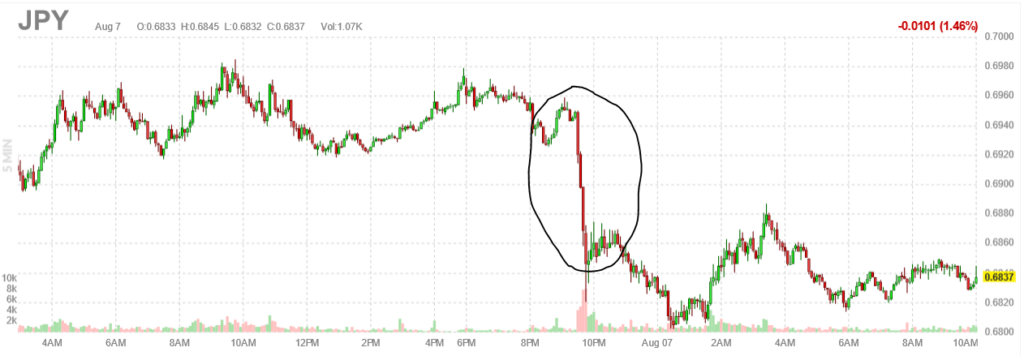
What To Watch Today
Earnings
(Click on image to enlarge)
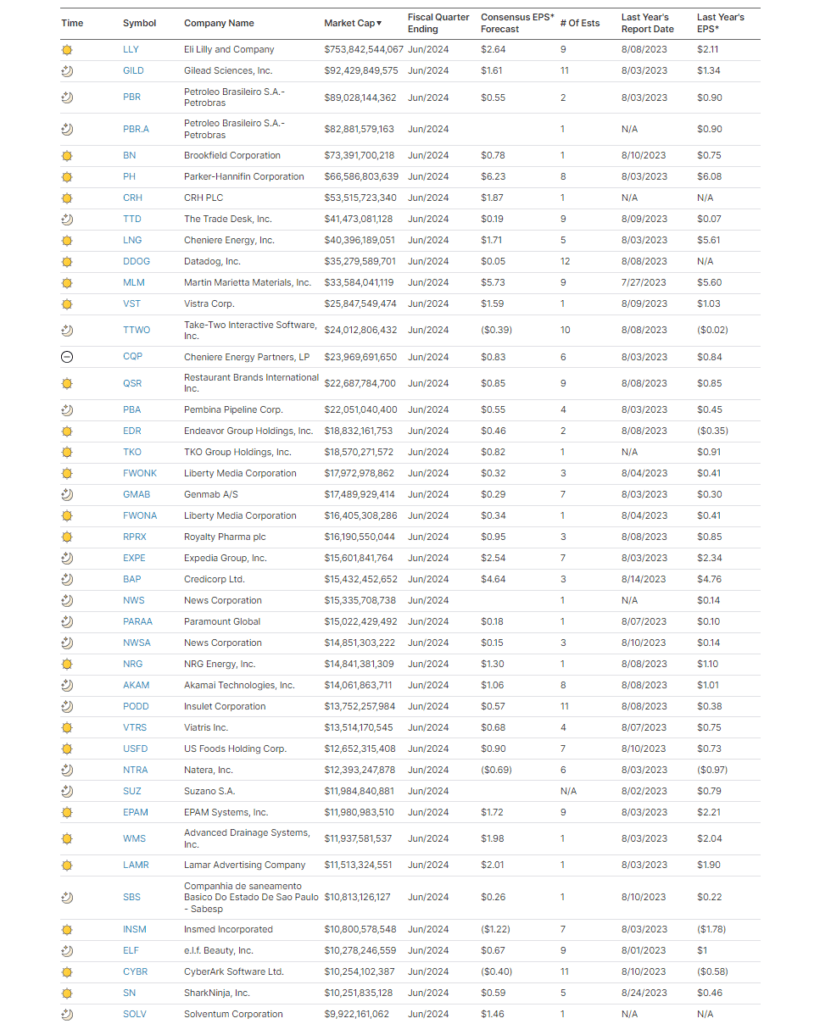
Economy
(Click on image to enlarge)

Market Trading Update
As noted yesterday, with the major markets deeply oversold short-term and sentiment becoming more bearish, we expected a bounce from the recent lows. However, as shown below, many investors were caught by the swiftness of the sell-off across all markets. These “trapped longs” will look for a rally to sell into, particularly in the more speculative areas of the market like small and mid-cap stocks, cryptocurrencies, and meme-stocks.
The S&P 500 is trading well into three (3) standard deviations below the 50-DMA. When these more extreme and sharp declines occur, they are often met with buyers looking to “buy the dip.” However, with the market “gapping down” over the previous sessions, many of these “trapped longs” will look to exit closer to the 100-DMA. We saw such happen yesterday following a strong opening rally that faded into the afternoon.
(Click on image to enlarge)
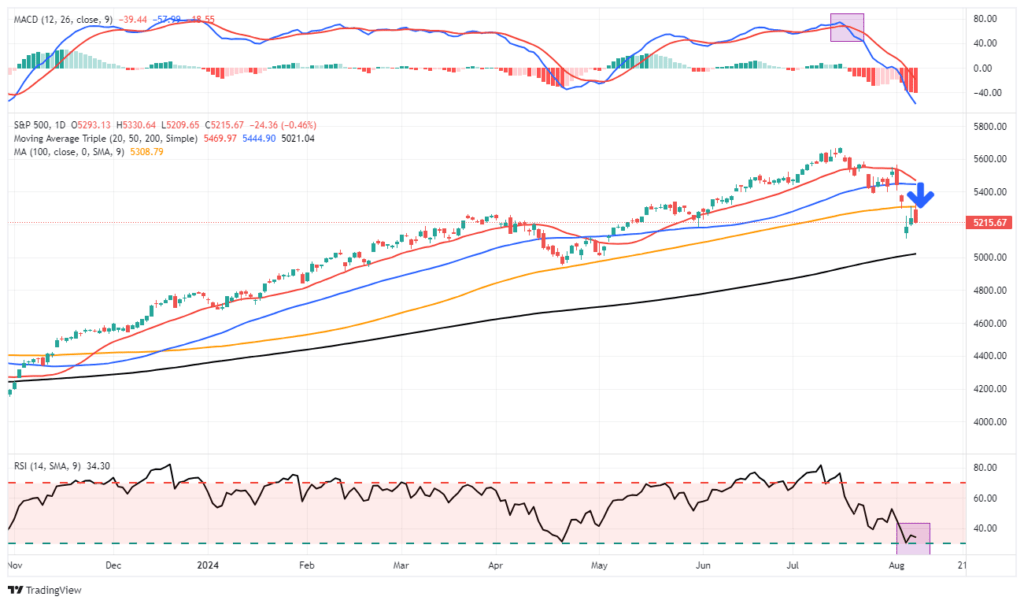
I would be unsurprised to see the market retest recent lows or decline further over the next month towards the 200-DMA. We have not resolved the issues that sparked the rout on Monday, and with “trapped longs” now exiting, it may take several more days before we find the actual bottom of the current market decline. Be patient and continue to manage risk.
Technical Review Of The Yen/USD
Note the graphs below are in yen to the dollar. Therefore, yen appreciation occurs when the ratio falls.
The first graph is the monthly long-term view of the yen to the U.S. dollar. The yen has depreciated about 50% since 2021. The recent price action is still minor in comparison. Accordingly, the recent appreciation of the yen may have more to go. It is currently sitting on a meaningful support line (blue). The trend remains intact if the monthly bar closes above the support line. The MACD, in the top graph, just had a bearish cross. However, it had two similar crosses over the last few years with limited downside (yen appreciation). While the graph sends a mixed message, it’s important to realize that this time is different as the Bank of Japan tightens rates while the Fed nears easing rates.
(Click on image to enlarge)
The short-term daily graph below argues that the recent appreciation is very extended. The MACD is oversold, albeit still on a sell signal. The RSI at the bottom is also grossly oversold. Based on both graphs and the changing fundamental backdrop between the BOJ and the Fed, the yen will likely depreciate soon and work off its oversold condition. However, the longer-term graph and fundamentals argue that yen appreciation could be far from over.
Remember that a strong yen may not have the same effect on markets as we have seen if it appreciates with less volatility.
(Click on image to enlarge)
Richard Fisher Defines When The Fed Would Calm Markets
Many investment professionals and economists called upon the Fed to cut rates on Monday. For example, in yesterday’s Commentary, we noted that economist Jeremy Siegel begged for an immediate 75bps rate cut. The market is like Paavlov’s dogs and demands Fed action when markets don’t behave.
Former Dallas Fed President Richard Fisher provided CNBC with a few interesting comments. His logic should help us appreciate when the Fed will and won’t react. To wit:
“The Fed will always act if something occurs that threatens the credit system or the economy and it is not yet clear what has happened the last few days, including today with the Dow off over 1,000, that is going to threaten the economy or the credit system. If it does, then they would move.”
One of the best gauges of the health of the credit system is corporate bond spreads. The graph below compares investment grade and junk corporate credit spreads. Both have risen recently, and the difference between them has widened. Accordingly, there is some stress in the credit markets. However, the level of credit spreads is still extremely low. Thus, recent credit spread widening is not likely a primary Fed concern.
(Click on image to enlarge)
Tweet of the Day
(Click on image to enlarge)
More By This Author:
Hedging Extremes Highlight FearThe Yen Carry Dump
Yen Carry Trade Blows Up Sparking Global Sell-Off
Disclaimer: Click here to read the full disclaimer.

